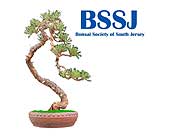So here is a multi-trunk Rocky Mountain Juniper. This tree was purchased at Natures Way at the Spring Walter Pall Woodstock workshop in 2009.
The tree seemed to be a challenge to most folks there, but the multiple trunks, loads of embedded deadwood, and the possibility for a real knockout tree intrigued me.

In Spring of 2K10 the tree was potted up in a plain deep pot from Ron Lang, to help with root mass growth.
The initial styling was performed. A lower branch that did not contribute to the style was removed.

In Spring of 2K10 the tree was potted up in a plain deep pot from Ron Lang, to help with root mass growth.
The initial styling was performed. A lower branch that did not contribute to the style was removed.

In 2K10 at the Fall Peter Adams workshop we discussed the possibility of jinning the tallest trunk, as it seemed cumbersome, and styling the crown on this trunk so that it had good visual balance with the rest of the tree just didn't work.
The jinning was carried out, and the result was quite good. The overall visual mass of the foliage was greatly reduced, and the tree started to take on that characteristic "wild" look that so many RMJs have. This also allowed the deadwood throughout the tree to become more obvious.

Peter also sketched up a nice matching pot that he thought would better set off the tree. This pot would replace the heavier darker pot in which the tree was initially potted. The pot was commissioned with my friend Glynn Harris from Erin Pottery.

Here is the tree, repotted in the Erin pot. I believe the combination of lighter colors and smaller pot mass give the tree a feeling of wild lightness. It also looks more "open" visually.

The tree was completely wired with #22 over the summer, so this will stay on for several years, and the tree will be allowed to grow. It will over-winter on the ground in a wind-break. It will be watered as necessary, and inspected weekly.
The tree needs to be potted a bit deeper in this pot, so with a larger root mass to support it, this may be done in the Spring of 2K12.
Flex















